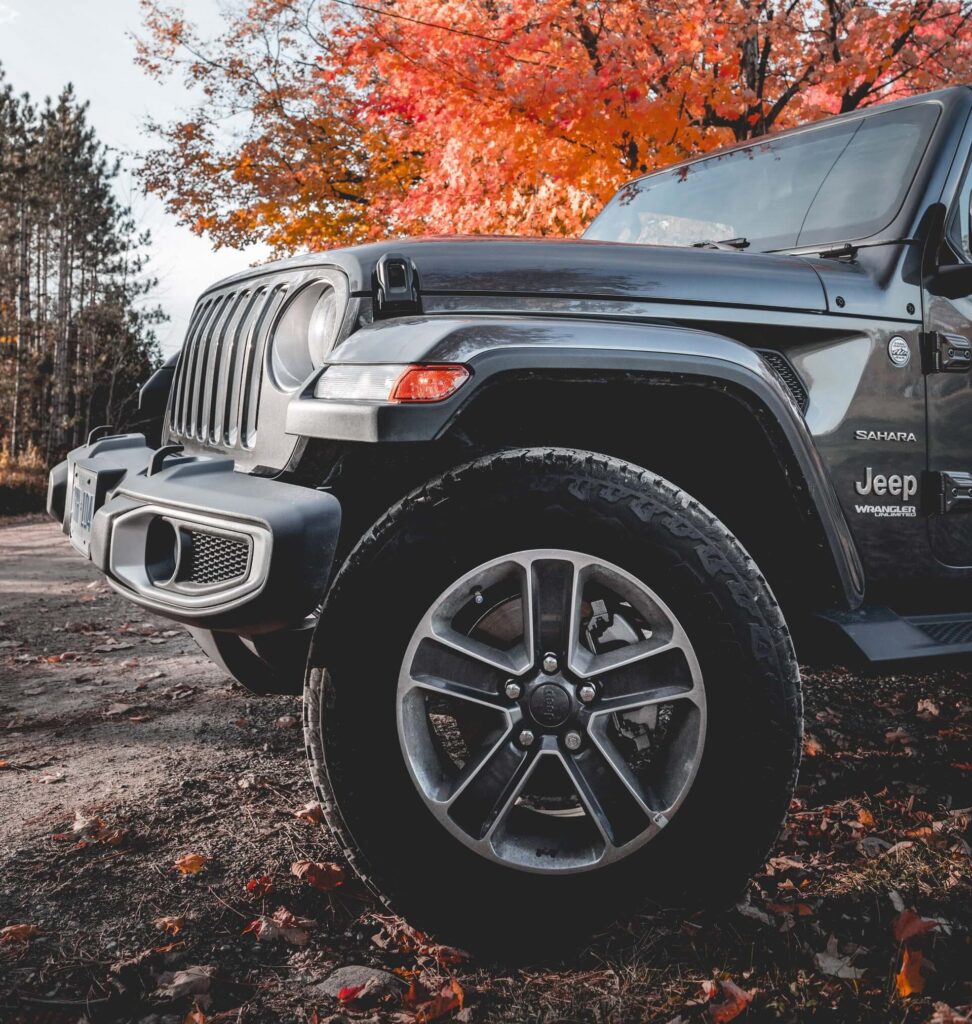If you ask any off-road enthusiast, locking hubs are integral to your truck, Jeep, or SUV’s 4WD system. The front wheel hub lock can be either manually engaged or locked automatically by shifting the gear stick.
When the hubs lock, a portion of the engine’s drive power is transferred to the front wheels, making your vehicle a part-time four-wheel drive. This is essential as not all drive terrains warrant 4X4 performance.
Both manual or auto-locking hub configurations have their pros and cons. Most older vehicles came fitted with manual locking hubs, also known as freewheeling hubs. Newer 4X4 vehicles are fitted with auto locking hubs.
Contents
Manual Locking Hubs
How Do Manual Locking Hubs Work?
When you set the actuator to ‘lock,’ a spring-loaded collar in the freewheeling hub slides and connects to the front axle half shaft.
This transfers the drive power of the engine to the front wheels. When set to ‘free,’ the spring-loaded collar disconnects from the front axle half shaft letting the front wheels spin independently of the differential and front driveshaft.
This renders the car a 2WD. Engaging your manual hub couples the driveshafts, differential, and front wheels as one unit.
Benefits Of Manual Locking Hubs
Most die-hard off-road enthusiasts prefer manual locking hubs because they are not prone to malfunction. When you engage or disengage the manual locking hubs by hand, there is no doubt that the hubs are locked.
As any off-roader knows, it is imperative for the hubs to lock or unlock when needed.
Unless they suffer physical damage, manual locking hubs are highly reliable.
Another benefit is that manual locking hubs can provide better fuel economy than newer-style automatic hubs.
When unlocked, a manual locking hub configuration has fewer rotating front drivetrain parts. This reduces the workload on the engine, thereby improving the fuel consumption of your Jeep.
Disadvantages Of Manual Locking Hubs
To lock the manual hubs and engage 4WD, you have to stop the vehicle, step out of the car and physically turn both hubs by hand.
While this may not be such an arduous task, it is definitely not nice when the hub is buried underwater or mud or if it is raining. Having to get out of your car can be highly uncomfortable after a long day or in unforgiving weather conditions such as snowing or heavy rainfall.
Another often overlooked disadvantage of freewheeling hubs is that they stick out, making them prone to damage when off-roading. The cast aluminum hub components can easily break.
How To Use Freewheeling Hubs
Selecting 4WD in a car with manual locking hubs involves two steps.
The first one is physically turning the hub handle to set it on locked. After the actuator is set to lock, you have to select High 4X4 or Low 4X4 in the car to operate in 4WD.
Auto-Locking Hubs
How Do Auto-Locking Hubs Work?
Several auto-locking hub designs work differently. Some are not capable of engaging or disengaging 4WD when the vehicle is in motion.
With older auto-locking hub designs, you have to stop the car and reverse a short distance to engage the locking mechanism.
Others use a vacuum diaphragm when shifting between 2WD and 4WD modes.
Generally, the locking mechanism of most of these new-style hub designs is a sort of one-way clutch.
When the driveshaft applies a torque on the hub, it forces it to slide in and lock. The hub remains locked as long as the transfer case is maintained in 4WD.
Benefits Of Auto-Locking Hubs
With auto-locking hubs, 4WD can be engaged or disengaged conveniently on the go.
This means you don’t have to stop, get out of the vehicle, and physically twist a dial on the front wheel hubs. The auto-locking hubs take care of this automatically on the go.
Jeeps have the “Selectro” auto-locking hubs with six-bolt lock-outs. These automatic hubs have a “Lock” and “Auto” position on the dial.
This allows you to have the hub in the locked position all the time or engage it when needed.
Disadvantages Of Auto-Locking Hubs
The most common disadvantage of automatic hubs is that they won’t engage when needed. Most off-roaders avoid automatic hubs because they are highly prone to malfunctioning.
Rust, worn-out parts, or dirt can prevent the mechanism from locking the hub.
Unfortunately, most drivers don't realize this until they find themselves stuck axle-deep in water or mud.
How To Use Automatic Locking Hub
You can select 4WD in an automatic hub configuration by moving the gear stick into L4 or H4.
Depending on the automatic hub design or vehicle, this can be done when the vehicle is moving or stationary.
With most new models, you also have the option to manually lock the hubs using the wheel brace when the electronics fail.
Conclusion
Part-time 4WD vehicles are designed to perform primarily as 2WD and only 4X4 when necessary. Regardless of the hub configuration you have, if you don’t take good care of your car, it will cost you.
Although manual locking hubs seem “tougher” than the auto-locking hubs, they still require regular maintenance. Years of hard use, rust, moisture, and dirt will take their toll on your hubs.
I hope you got a better understanding about automatic and manual hub locks through this guide. If you think this guide may be helpful for someone else, you can share this with them. You just have to hit one of the share buttons below for that.
Peace!!

